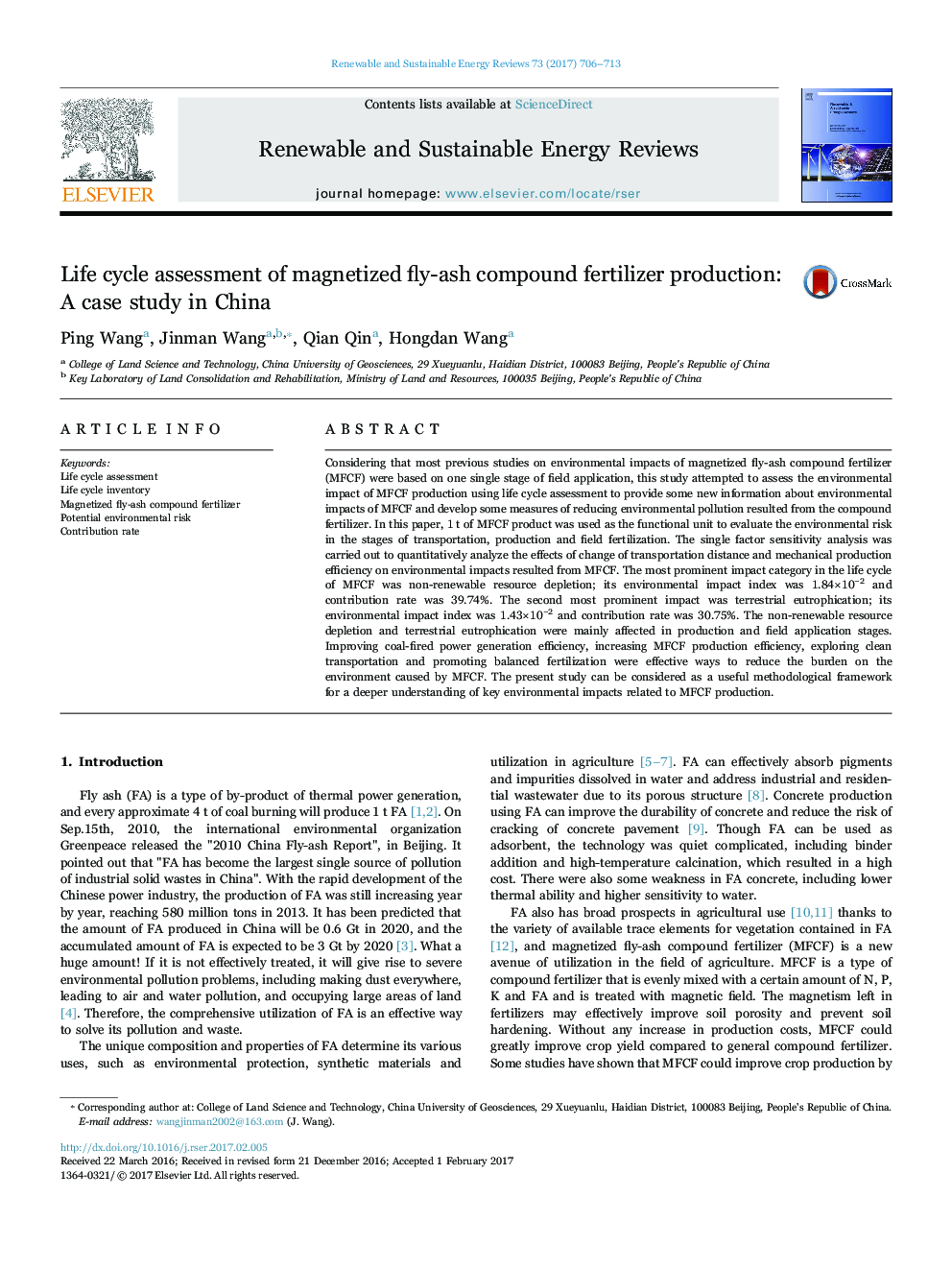| Article ID | Journal | Published Year | Pages | File Type |
|---|---|---|---|---|
| 5482294 | Renewable and Sustainable Energy Reviews | 2017 | 8 Pages |
Abstract
Considering that most previous studies on environmental impacts of magnetized fly-ash compound fertilizer (MFCF) were based on one single stage of field application, this study attempted to assess the environmental impact of MFCF production using life cycle assessment to provide some new information about environmental impacts of MFCF and develop some measures of reducing environmental pollution resulted from the compound fertilizer. In this paper, 1Â t of MFCF product was used as the functional unit to evaluate the environmental risk in the stages of transportation, production and field fertilization. The single factor sensitivity analysis was carried out to quantitatively analyze the effects of change of transportation distance and mechanical production efficiency on environmental impacts resulted from MFCF. The most prominent impact category in the life cycle of MFCF was non-renewable resource depletion; its environmental impact index was 1.84Ã10â2 and contribution rate was 39.74%. The second most prominent impact was terrestrial eutrophication; its environmental impact index was 1.43Ã10â2 and contribution rate was 30.75%. The non-renewable resource depletion and terrestrial eutrophication were mainly affected in production and field application stages. Improving coal-fired power generation efficiency, increasing MFCF production efficiency, exploring clean transportation and promoting balanced fertilization were effective ways to reduce the burden on the environment caused by MFCF. The present study can be considered as a useful methodological framework for a deeper understanding of key environmental impacts related to MFCF production.
Related Topics
Physical Sciences and Engineering
Energy
Renewable Energy, Sustainability and the Environment
Authors
Ping Wang, Jinman Wang, Qian Qin, Hongdan Wang,
